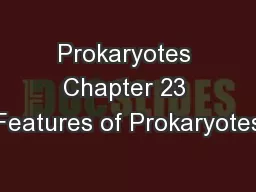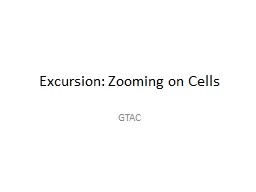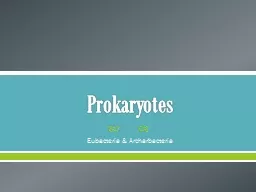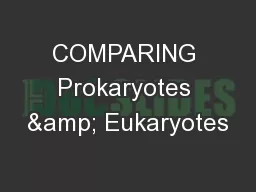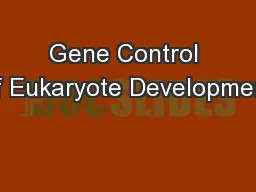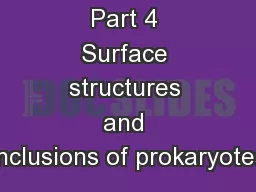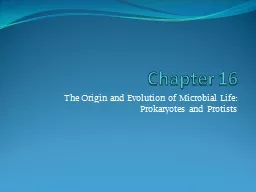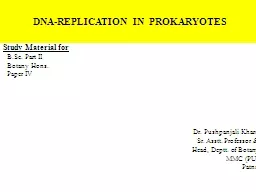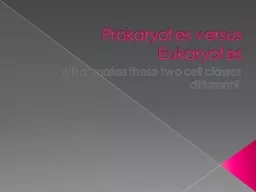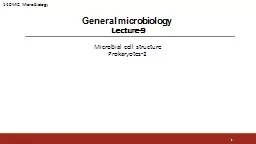PPT-Prokaryotes Chapter 23 Features of Prokaryotes
Author : alida-meadow | Published Date : 2018-10-23
Cellular organisms In one of two domains Archaea and Eubacteria Generally smaller than eukaryotes Most are unicellular some form colonies or filaments No membraneenclosed
Presentation Embed Code
Download Presentation
Download Presentation The PPT/PDF document "Prokaryotes Chapter 23 Features of Proka..." is the property of its rightful owner. Permission is granted to download and print the materials on this website for personal, non-commercial use only, and to display it on your personal computer provided you do not modify the materials and that you retain all copyright notices contained in the materials. By downloading content from our website, you accept the terms of this agreement.
Prokaryotes Chapter 23 Features of Prokaryotes: Transcript
Download Rules Of Document
"Prokaryotes Chapter 23 Features of Prokaryotes"The content belongs to its owner. You may download and print it for personal use, without modification, and keep all copyright notices. By downloading, you agree to these terms.
Related Documents

